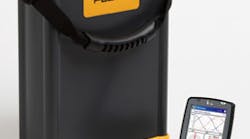At Georgia Power, an investor-owned utility with more than 2.1 million customers, power quality issues have taken top priority for years. The utility first formed a power quality department in the late 1980s. More than two decades later, the demands on this department have ever increased. According to David Duncan, team manager for the Enhanced Power Quality division, his department handles 800 to 900 power quality jobs per year using nine field engineers. Needless to say, their tools get a workout.
Using a variety of monitoring and measurement tools, including 24 leased and six owned units from Reliable Power Meters (RPM), a company acquired several years ago by Fluke Corp., Everett, Wash., Duncan's team received a new power quality analyzer a few days before Christmas: the recently introduced Fluke 1750 Three-Phase Power Recorder.
Suitable for a variety of markets, including utility, industrial, and commercial customers, the Fluke 1750 provides a window's view into an electrical distribution system. “The new Fluke 1750 design has some capability from the legacy RPM products, but has all new technology and new features,” explains Michael Gipe, engineering manager for Fluke Power Quality. “It also shares the ease-of-use features from prior products.”
The unit enables users to record every measurement on every event on every cycle without first applying thresholds. “It is very much fire-and-forget,” Duncan says. “Having a tool that gives us accurate, reliable data measurements is important. At the end of the day, we must provide our customers with a nonbiased analysis of the situation and an appropriate solution to meet their needs.”
Prior to receiving the 1750s, Georgia Power had been a beta user of RPM products. So during product development, Fluke asked the utility for feedback on desired features for its next-generation power recorder. Georgia Power provided user insight into several important feature changes, including removal of the hard drive in favor of SD flash memory cards. “Portability and access are very important,” Duncan says. “Using the PDA is a huge advantage; it eliminates the field engineer's need for a computer bag, which is great because they are carrying so much equipment into the site. And the removable flash memory card means you can pop out the card and put it in your pocket.”
Duncan also likes the wireless connectivity as it simplifies access to the unit, which can sometimes be installed in tight spots or otherwise dangerous areas. “This is Fluke's first use of a wireless front panel,” Gipe notes. “The wireless technology makes it easy to check connections and signals. The unit's PDA is user-friendly and based on an HP platform installed with Bluetooth and Pocket PC software.”
Using the wireless interface, users can view waveform displays, meter screens, and phasor diagrams in real time. They can also control multiple power recorders over an IP network.
The device offers event aggregation to show deviations in normal power feeds. Aggregation allows the field engineer to look at events as a whole, rather than looking at raw data and piecing together the complete view of a deviation. Field engineers can leave the unit to record for up to 31 days to capture every cycle of the power line.
“It's easy to use,” Duncan says. “The data can be managed through a variety of avenues — including the Power Analyze software, Excel, and other professional programs — giving us the ability to deliver very specific, customizable reports via hard copy or e-mail to our customers.”
Fluke 1750 users can annotate the data stream with text, photos, or audio. A field engineer may use this feature to attach a digital photo of the setup to compare it upon his or her return to the site.
Weighing in at 14 pounds, it can be conveniently transported using the built-in carrying handle. Available at a list price of $9,995 (U.S.), the unit comes with all the tools and accessories needed to start monitoring right out of the box, including software and a PDA. For more information, visit www.fluke.com/pq.
Product Features
- Meets IEC 61000-4-30 Class A requirements
- Offers 5 MHz, 8,000V peak waveform capture
- Offers threshold-free setup
- Swaps channels through the wireless PDA or PC when hardwire connections are not correct
- Features 600V CAT IV and 1,000V CAT III safety rating



